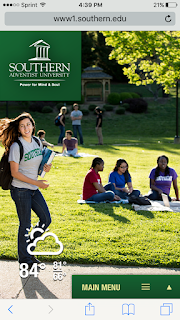Both BuzzFeed and Diply are native advertising websites that connect with their followers and viewers through relatable, humorous, and interesting media via photos, memes, videos, personality quizzes, gifs, etc.
Both BuzzFeed and Diply use Facebook, Instagram and Twitter as their main communication sources. BuzzFeed is much more established, and it is easily noted when looking at the amount of followers the have compared to Diply on each social media outlet. On Facebook, BuzzFeed boasts over 5 million "likes", while Diply has a little over 1 million. On Instagram, BuzzFeed has 1.2 million followers while Diply has 5,436. On Twitter, BuzzFeed connects with 2.7 million followers, Diply with 36.7K.
While scrolling through BuzzFeed's feeds (pun intended), there is a large array of "news" being shared - from Starbucks' E. Coli scare, to Kim Kardashian's photoshopped photos, to Ricky Martin's endorsement of Hillary Clinton. There is such variety in the three topics mentioned above, and that is just the beginning of their never-ending news posts. BuzzFeed makes it a point to provide interesting topics to almost any type of person. The political people enjoy the articles about 2016's presidential candidates, Kardashian fans have a quick and easy way to "keep up with the Kardashians", and keeps consumers up to date on potential food scares such as Starbucks. Along with these seemingly newsworthy posts, are also humorous videos and pictures relating to college students and finals week, "Friends" fans, and other random insightful and interesting stories.
Diply, who is very similar to BuzzFeed, seems to lack the relatability that BuzzFeed offers its followers. When scrolling through Diply's Twitter feed, there are no political news articles, no mention of newsworthy events that people want to know about - instead, there is an abundance of memes, photos, gifs, and how-to links.
BuzzFeed also offers its followers a unique offering on Facebook that Diply does not. It not only has several sub-links to genre specific articles, but has also created separate Facebook pages sharing only on specific topics, such as BuzzFeed Travel, BuzzFeed Food, and BuzzFeed Animals.
Whereas, while Diply has an "explore" tab on their website, it offers less variety and no social media specific pages.
Overall, I think that BuzzFeed does a tremendous job at personalizing and customizing its news and posts to its wide array of followers. In the past 24 hours, BuzzFeed has tweeted approximately 40 times - because of their wide array of themes and topics, at least one of those posts can relate to each internet user that follows their social media accounts. That is seen through the 856 retweets BuzzFeed gets on a post vs. the 20 retweets that Diply sees.
Because my website is BuzzFeed, I can honestly say that right now, they are doing great and are building and growing relationships daily. In the future they may need to change their methods or include more information, but right now, as long as they stay relevant and continue sharing interesting, humorous, and newsworthy posts, they will stay on top!














































